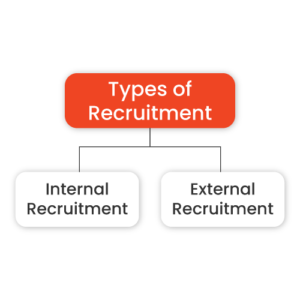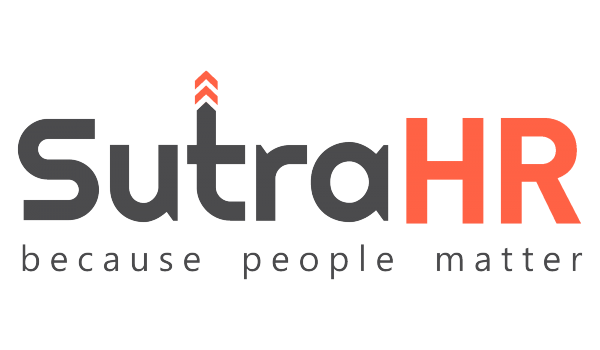What is Recruitment?
Recruitment is the process of finding the best candidates for a job role in your company. In Human Resource Management, the recruitment process starts with identifying the need for new employees in an organization and ends with introducing those employees into the firm. There are two types of recruitment internal and external that often inform an organization’s hiring process.
The recruitment process has several intricate tasks, like
1. Identifying and forecasting the need for human resources in an organization.
2. Advertising for a specific job role in a specific domain.
3. Conduct screening tests, interviews, etc to shortlist the candidates who apply for the position.
4. Selecting candidates in a timely and cost-effective manner.
Through the recruitment process, your company can attract top talent in any domain. This will help you to boost your company’s manpower, introduce new skill sets into a job, and train employees to fill vacant jobs in the future.
What is the Recruitment Process in HR?
Recruitment is the process of finding the right and potential talent to fill up the vacant positions in an organization. The HR sources the right candidate who has the ability, skills, and Talent that the organization needs to achieve a particular objective or the organization’s goal.
The Recruitment process involves:
Looking after the job vacancy, analyzing the market and job requirements, reviewing the received applications, shortlisting and
taking the final step of hiring the right talent.
To increase hiring efficiency, we highly recommend the HR professional team go through the following types of Recruitment methods. All these Types of Recruitment methods are proven to be the best and most effective. The following methods provide consistency to HR in the recruitment process.
14 Types of Recruitment Methods You Need to Know!

Recruitment is one of the primary processes in your company’s HR department. When looking for job roles, your company can recruit candidates internally, or you can look for candidates externally. Is one of these strategies better than the other? The answer is NO.
Your HR department will have to analyze several factors like the job role, the position offered and the skill sets required before deciding on a recruiting method. This is crucial because choosing the right method will help your organization to reduce the wastage of time, money, and training resources.
Let’s take a look at both these types of recruitment, and understand when each of them works best for you.
Internal Recruitment
Internal recruitment is a process where your company internally hires candidates for new job roles. Essentially, whenever a new position opens up, your HR team looks at a list of your current employees, to try and fill the vacant position.
Internal recruitment is preferred by many companies because it has many benefits. First, this strategy doesn’t need your HR department to start from scratch. You already have a list of your existing employees, their skill sets, their performance measures, etc. This makes internal recruiting simple, yet efficient. Secondly, it is a major motivating factor for your employees, because they get to move on to higher job roles and get better opportunities.
Even then, there are many sub-types of recruitment by which a candidate is hired internally. Let’s take a look at some of them-
1. Transfers
A transfer is shifting an employee internally within your company for the same job role. In essence, your employee’s designation, salary, and skill requirements remain the same.
For instance, if your company’s center in New York is working on a big technical project. In this case, your HR department might decide to transfer a few technical associates from other branches to your New York center, to make up for the manpower required.
2. Promotions
Promotion is the process of upgrading your employee’s status. This upgrade influences your employee’s job role, responsibilities, salary, perks as well as leadership. Promotion is one of the most common forms of internal recruitment, and most higher job positions are filled by this process.
For instance, an associate might be promoted to a senior position, after a few years of dedicated service in your organization
3. Re-Employment
Re-employment is a process, where your HR department may decide to call back ex-employees, to fill new vacant job roles. Re-employment is effective, because your existing employees understand your company culture, and are well versed with their job role.
For instance, say person A left your company to pursue higher education in his/her field. Your HR department may decide to re-employee person A, who will bring in a fresh perspective to your company’s job role.
4. Internships
Internships are short-term job roles, where your company hires candidates to assist in various duties. Internal recruitment for internships happens usually via referrals. An intern is an entry-level candidate who assists your company and works closely with different teams.
For instance, various companies offer internships over summer and winter for students in colleges.
5. Internal Advertisements
Internal advertisements refer to advertising for a job role inside your organization. This job role might be open to all your employees, or employees within a specific domain. The idea is to recruit employees internally, saving on time and cost.
For instance, say your company is opening a new branch overseas, requiring similar operations as your current branch. You may advertise internally, to give the vacant jobs to internal employees, who are willing to relocate.
6. Reference
Employee reference is a process, where your company hires candidates via referrals from existing employees. Your current employees may refer their friends, relatives, or acquaintances suitable for a particular job role. Reference is encouraged, because it significantly reduces cost, and helps to find quality employees.
Though internal recruitment saves time and cost, it is not always effective. Sometimes, hiring employees externally brings a fresh perspective to your company. In addition, your existing employees may not have the skills or the experience to fill a critical vacant position
External Recruitment
External recruitment is the process of hiring candidates external to your company. Essentially, a new vacant job role is filled by a freshly hired candidate, with great aptitude for the required job.
External recruitment is more expensive and time-consuming when compared to internal recruitment. However, it is preferred because it gives your company a fresh perspective. Hiring talented individuals has tremendous long-term potential for your company. There are various types of external recruitment, some of which are explained below-
7. Advertisements
Advertisement is a process, where your company advertises for a specific job in print or electronic media. This advertisement usually has a company recruiting many candidates in a short span of time.
For instance, if your company wants to hire mass recruits for a new sales campaign, an advertisement will be highly effective.
8. Different Types of Job Portals
This is a process, where a potential employer finds employees via a third-party portal. A vacancy is announced by the employer, which is then advertised to all the potential candidates on the portal. Sometimes, the recruiter might get in touch with potential candidates.
For instance, an employer may post a vacancy for the role XYZ. The job portal then filters its database to look for suitable candidates. LinkedIn is a famous example of this method.
9. Recruitment Agency
Recruitment agencies are another effective source of external recruitment. Here, your company approaches a recruitment agency (which may be private or government-based) to hire for a specific job. Agencies like bristol online recruitment usually have an updated database of interested and qualified candidates for a job, which makes the recruitment process easier.
For instance, film and television casting agencies supply the workforce and talent for most major TV/ film productions.
10. Reference/ Recommendations
Reference and recommendation are slightly informal and intangible ways of hiring new candidates. Under this process, current employees/ associates of the company refer suitable candidates for a job. The company may then decide to conduct screenings/ interviews for these contacts, just like a regular external interview.
11. Educational Institutions
Recruitment from educational institutions is also called “campus recruitment“. Campus recruitment is a process where companies visit college/ institution campuses and hire fresh graduate students.
For instance, most companies in the technical, financial, and management sectors conduct campus recruitment drives, to fill in entry-level job roles.
12. Walk-in Institutes
This hiring process is usually followed when a company wants to hire unskilled/ semi-skilled workers for a short time. Here, the regular employee interview process is skipped. Instead, your company appoints an employee to manage, verify and hire candidates who simply walk in for interviews.
For instance, entry-level sales/ marketing jobs usually follow this process.
13. Databases
Some firms also follow the practice of maintaining their own database for hiring. In this database, data is collected from various sources, and used for finding suitable candidates quickly.
For instance, a company may consolidate data from various job portals, private agencies, exchange centers, previous applicants, and educational institutes. Maintaining this database will speed up the process of hiring.
14. Employment Exchanges
An employment exchange is a government portal. This portal is designed to bring together potential employers and employees together in one platform. Unemployment candidates register on this portal with their qualifications. Employers can then post their job requirements, and immediately find suggestions for suitable candidates.
For example, Datamatics and Ferguson are some popular employment exchange portals in India.
Conclusion
There are various types of recruitment available. No one type is best for all scenarios, and your company needs to carefully evaluate the best process. Internal recruitment is cheap, fast, and efficient, but it may lead to stagnation and slow growth of a company. External recruitment provides skills, talent, and growth, but it is tedious and expensive. Most companies strike a good balance between these 2 types of recruitment, to reap the benefits of both methods.









